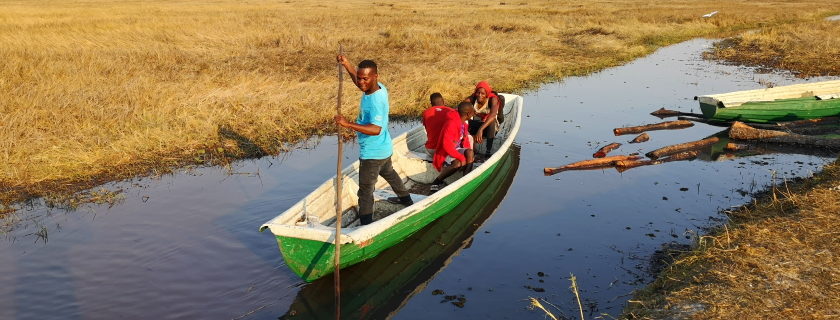Botswana’s recent Water Policy highlights the need of managing water resources at the lowest appropriate level. However, the country’s Catchment Management Areas (CMA) haven’t been clearly defined yet, as well as the institutional arrangements and guidelines for such planning.
Being a country with a semi-arid climate and low, unevenly distributed and highly variable rainfall, water resources’ management is of the utmost importance. Therefore, the Department of Water Affairs (DWA), responsible for the water management in Botswana, has set the management of catchment areas as a priority.
Botswana covers an inland area of 582,000 km2, 70% of which is the Kalahari Desert. On the other hand, the country is also home to the Okavango Delta, Africa’s largest wetland. Such asymmetries, together with a low population density but highly concentrated in the South-East and North-West areas, along with the country’s harsh climate, pose additional challenges.
The main goals of the assignment are: to study the best approach and feasibility of establishing catchment management areas in Botswana; to develop a legal and administrative framework for catchment management committees; and to define the best way to implement the established approach. Besides catchment planning, the DWA has stakeholder participation as a priority for this assignment and, therefore, there is also an important part of community consultation and negotiation processes.
Some of the most relevant tasks of the assignment:
- Planning and data collection, including review of literature and legislation;
- Mapping and GIS work to create overlays of the water resources, water supply, administrative and agricultural areas. The maps will be also used to guide the community and stakeholder consultations;
- Discussion of the catchment management approaches suggested, including: reviews from water institutions, communication with the community regarding water resources importance and public consultations;
- Final design of the catchment’s border lines, considering public consultation feedback;
- Definition of a communication strategy for public awareness regarding the roles that the different CMA and their representative Committees will have;
- Formulation of a road map for establishing the several CMA, including the respective financial costs.
[Project funded by the World Bank]

